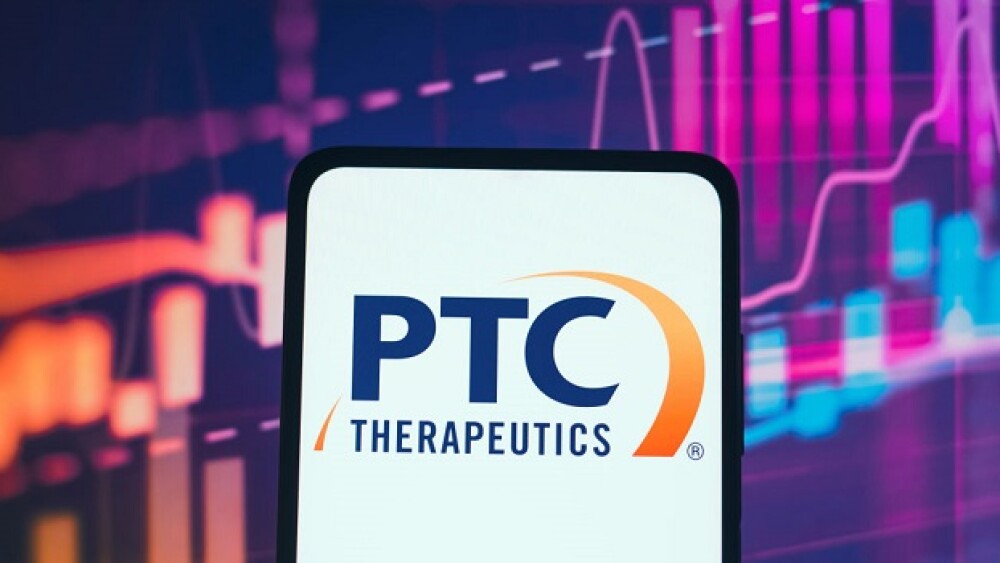Upstaza is the first targeted therapy for aromatic L-amino acid decarboxylase (AADC) deficiency. PTC expects to submit a Biologics License Application to the FDA in the first half of 2023.
The PTC Therapeutics logo is pictured on a phone screen/courtesy of SOPA Images/Getty Images
England’s National Institute for Health and Care Excellence (NICE) has recommended PTC Therapeutics’ Upstaza (eladocagene exuparvovec) for the treatment of aromatic L-amino acid decarboxylase (AADC) deficiency in patients aged 18 months or above.
NICE’s recommendation follows Upstaza’s November 2022 approval in the U.K. when the gene therapy was granted marketing authorization by the Medicines and Healthcare Products Regulatory Agency (MHRA). Upstaza was also given regulatory go ahead by the European Commission in July 2022.
The gene therapy has yet to be approved in the U.S. PTC expects to submit a Biologics License Application (BLA) to the FDA in the first half of 2023, the company announced during its presentation at the 41st Annual J.P. Morgan Healthcare Conference.
NICE’s recommendation means that the NHS is responsible for making sure that leniolisib is available for use when needed.
“If a patient has AADC deficiency and the doctor responsible for their care thinks that eladocagene exuparvovec is the right treatment, it should be available for use, in line with NICE’s recommendations,” according to NICE’s draft guidance document for Upstaza’s recommendation.
To support this, PTC has entered into a commercial agreement with the NHS to provide Upstaza at a discount. The gene therapy is priced at approximately $3.7 million per 0.5-mL dose.
A day after NICE’s recommendation for Upstaza, Stuart Peltz, Ph.D., stepped down from his post as PTC’s CEO, effective immediately, after 25 years. He will be succeeded by Matthew Klein, M.D, PTC’s current chief operating officer.
The Condition and the Cure
Occurring in between 1 in 64,000 and 1 in 90,000 births in the U.S., AADC deficiency is classified as an ultra-rare genetic disorder. Its symptoms typically manifest during the first year of life and affect a wide range of organ systems. Patients with AADC deficiency tend to suffer from developmental delays, lethargy, muscle stiffness and difficulty moving.
In most cases, AADC deficiency is severe, “broadly defined by international consensus guidelines as reaching no or very limited developmental milestones,” according to NICE’s draft recommendation.
AADC deficiency is caused by a mutation in the DDC gene that leads to insufficient levels of the AADC enzyme. In turn, the production of dopamine, serotonin and other important neurotransmitters is weakened, giving rise to the condition’s symptoms.
Upstaza works by delivering a functioning copy of the DDC gene. The treatment uses a recombinant adeno-associated virus to carry the therapeutic gene and is administered directly into the brain through a minimally invasive procedure.
Before Upstaza, there were no treatments specifically indicated for AADC deficiency. Patients were usually put on symptomatic management involving a wide range of specialist doctors. Most patients die before reaching 10 years of age.
In September 2021, PTC released a long-term analysis of Upstaza showing that it led to improvements in motor function and cognitive skills, with beneficial effects durable for up to five years.






